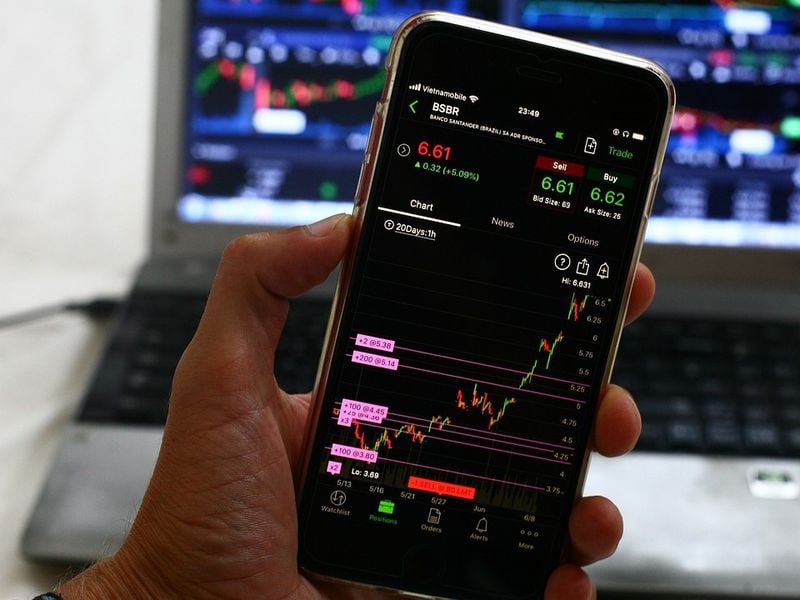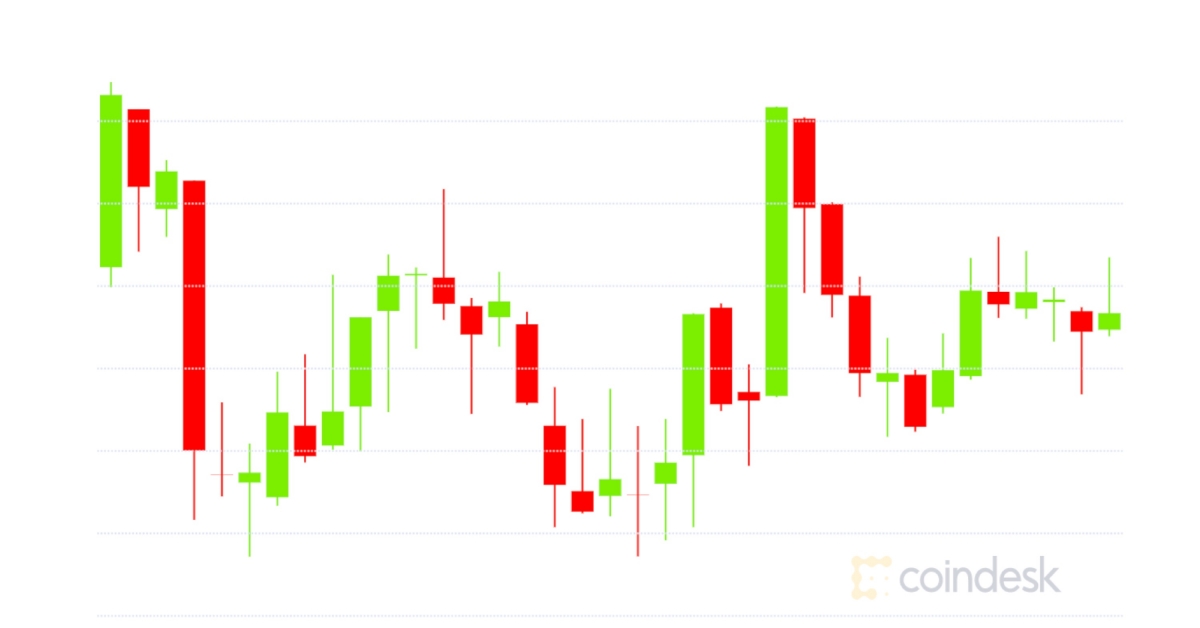Blockchain Bites: Is DeFi an Inside Deal?
(Cytonn Photography/Unsplash)
Blockchain Bites: Is DeFi an Inside Deal?
A Lightning-based derivatives platform took in pre-seed capital, a new blockchain analyst will try to track down missing funds from the defunct QuadrigaCX exchange and CoinDesk looks at how retail interest in DeFi compares to the infamous ICO bubble.
Top shelf
DeFi interest?
Retail interest in decentralized finance (DeFi) applications remains quite low compared to the initial coin offering (ICO) bubble, measured by Google search queries, CoinDesk’s Omkar Godbole reports. Indexed to the peak of searches for “ICO,” searches on Google Trends for the word “DeFi” currently return a value of 18, indicating the retail crowd is as interested in open-source finance as they were in ICOs during the latter’s boom. Put in context, these searches come amid a period when the total value locked into the DeFi ecosystem has increased 1,300% to above $9 billion this year, approximately 66% higher than the $5.4 billion raised by ICOs in 2017. This disparity between searches and capital may indicate that DeFi’s growth is being driven by savvy investors.
Quadriga update
In the latest legal update to the 18-month long QuadrigaCX saga, Canadian law firm Miller Thomson has hired a consultancy firm to perform blockchain analytics as it works to return $200 million in crypto customers are said to have lost, after the exchange’s chief executive died under mysterious circumstances. The firm, Kroll, will pair with its “strategic partner” Coinfirm to analyze a subset of transaction data, CoinDesk’s Nikhilesh De reports, for a $50,000 CAD ($38,000 U.S.) fee. Miller Thomson noted it could not begin the process of disbursing funds until Ernst & Young (EY) finalizes its record of who is owed what and the Canada Revenue Agency has completed its audit of the exchange. So far, about $46 million CAD (around $35 million U.S.) has been recovered.
Fraud accusations
Yaroslav Shtadchenko, former project manager at now defunct crypto fund Bitsonar, has formally accused his former employer of six criminal offenses including fraud. Filing a notice of criminal offence with the Federal Bureau of Investigation, Shtadchenko said he “became aware that Bitsonar was actually a financial pyramid” last spring, CoinDesk’s Anna Baydakova reports. Bitsonar was an investment firm that managed to raise up to $2.5 million in crypto from investors. The exchange froze withdrawals in February and the website went offline in August.
Lightning round
Bitfinex and other early-stage Bitcoin startup investors led a pre-seed funding round for the Lightning Network-based derivatives platform LN Markets. Launched in March 2020, LN Markets has reached nearly $10 million in aggregate traded volume and has over 100 channels connected to its exchange, CoinDesk’s Zack Voell reports. It’s designed to avoid slow and costly on-chain transactions by connecting traders to a bitcoin (BTC) derivatives market by “streaming” their funds through the Lightning Network. Bitfinex’s CTO Paolo Ardoino said, “This is one of our first public investments and underlines our support for the Lightning Network.”
AWS solutions
Indian tech giant Tech Mahindra announced it will offer blockchain solutions built to global customers using Amazon Web Services (AWS). The company will provide solutions for aviation, telecom, and health-care supply chains and is planning to roll out support for multiple industries, including oil and gas and manufacturing, over the next 12 months. Ensuring supply chain continuity has become the focal point with businesses struggling to facilitate continuity in the current COVID-19 world, according to Rajesh Dhuddu, blockchain and cybersecurity practice leader, Tech Mahindra.
Quick bites
- Bithumb Exchange’s Offices Raided Again by Korean Authorities: Report (Paddy Baker/CoinDesk)
- Bitcoin Banking App Mode Eyes £40M UK Listing (Paddy Baker/CoinDesk)
- European Crypto Tax Companies Announce Merger to Power US Expansion (Paddy Baker/CoinDesk)
- Chainlink nodes were targeted in an attack last weekend that cost them at least 700 ETH (Yogita Khatri/The Block)
- SushiSwap Victims Urged to Lawyer up (Adriana Hamacher/Decrypt)
At stake
Sushi rolls
Over the weekend the creator of the breakout DeFi phenomenon SushiSwap cashed out, leaving trusting investors high and dry.
SushiSwap, a fork of Uniswap, aimed to further decentralize the automated money market by sharing revenues through a liquidity provider token (LP), called sushi (SUSHI).
The protocol leveraged a unique strategy of “zombie mining,” meant to draw liquidity and participants from Uniswap, by paying out extra LP tokens for users staking sushi on Uniswap. In just a week and a half, approximately $1.27 billion was raised, CoinDesk’s Will Foxley reports.
On Saturday, Sushi’s pseudonymous founder Chef Nomi sold his share of LP tokens Saturday for 37,400 ether (ETH), worth approximately $13 million, in what David Hoffman of Bankless called a “sin of betrayal.”
“When the anonymous founder market-dumps all his SUSHI upon the rest of the community, it is a sin of the highest order because the person that was supposed to be a leader instead defected and took everyone else for chumps,” Hoffman wrote in a recent newsletter.
“Again I did not intend to do any harm. I’m sorry if my decision did not follow what you expected,” Nomi tweeted.
Control of the project has since been transferred to FTX’s Sam Bankman-Fried, who plans to instantiate a multi-signature contract before the project can be fully decentralized into the hands of SushiSwap LP token holders.
Market intel
Buying the dip
People are “buying the dip.” Bitcoin’s fall from $12,400 to $10,000 over the past three weeks has led to a 2% increase in the number of “accumulation addresses,” or addresses that have at least two incoming transfers and have never spent funds, according to data source Glassnode. The divergence between prices and accumulation addresses suggests that investors view the recent price drop as a typical bull market pullback and expect prices to rise once more. “Markets typically retrace one third or more in a bull market after local euphoria,” Su Zhu, CEO of Singapore-based Three Arrows Capital said, suggesting prices could drop to as low as $8,800 and still be a “healthy target.”
Bitcoin options
Bitcoin’s options traders are seemingly bullish in the long term but bearish for now. According to data source Skew, the six-month put-call skew, which measures the value of puts, or bearish bets, relative to that of calls, bullish bets, is currently seen at -10%. This negative number indicates that call options expiring six months from now are drawing higher prices or demand than puts. However, the one-month skew has crossed above zero, a sign of investors adding put options to position for a deeper short-term price decline, CoinDesk markets reporter Omkar Godbole reports. Meanwhile, new data shows crypto derivative volumes rose 54% to more than $710 billion in August, surpassing a previous all-time high of $602 billion monthly volumes reported in May.
Tech pod
Gas tokens
Ethereum developers are weighing ditching a smart contract feature that offers rebates amid a period of climbing Ethereum gas fees. At stake are gas tokens, a way to essentially “tokenize” gas by allowing Ethereum users to buy up transaction fees when they are low and then spend them when the fee price rises. Developer Alexey Akhunov proposed last June to get rid of these gas tokens, which made up 1.5% to 2% of Ethereum transactions over the summer. While the matter is still under discussion, some developers worry tokenized gas could one day act as a “price floor” for transaction fees and keep them permanently high, CoinDesk’s Will Foxley reports.
Op-ed
Volatility & risk
In the latest Crypto Long & Short newsletter, CoinDesk’s Head of Research Noelle Acheson looks at the relationship between volatility and risk, and why the two metrics are erroneously conflated. Often crypto’s volatility is seen as a barrier to entry, as Fidelity Digital Assets found in a recent survey. Yet, high volatility is not the same as risk. “Volatility is a metric, a number, a measurement. Risk is an ambiguous concept,” she writes. “If we equate volatility with risk, then we are implying that we can measure risk. We can’t. Risk is based on the unknown. Bad things can happen from any direction, at any time, at any speed, in an infinite array of forms and configurations.
Podcast corner
Eth 2.0 staking
Ethereum 2.0 is coming, eventually. But its latest, and largest, testnet is live today. Speaking with Paul Hauner, the lead developer of the Ethereum 2.0 Lighthouse client, and Tim Ogilvie, co-founder and CEO of Staked, CoinDesk’s Christine Kim breaks down the three things everyone should know before staking on Eth 2.0.
Who won #CryptoTwitter?


Disclosure
The leader in blockchain news, CoinDesk is a media outlet that strives for the highest journalistic standards and abides by a strict set of editorial policies. CoinDesk is an independent operating subsidiary of Digital Currency Group, which invests in cryptocurrencies and blockchain startups.









